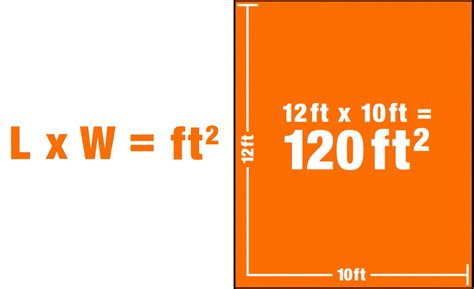How to Calculate Square Footage: A Simple Guide
Calculating square footage is a fundamental skill with applications ranging from home improvement projects to real estate transactions. Understanding how to accurately determine square footage is crucial for various purposes, ensuring you get the right materials for a project or an accurate assessment of property size. This guide will walk you through the process, explaining different methods and offering tips for accuracy.
Understanding Square Footage
Square footage refers to the total area of a space measured in square feet. One square foot is a square with sides measuring one foot each. Calculating square footage is essential for various tasks, including:
- Determining material needs: Knowing the square footage of a room helps you buy the correct amount of paint, flooring, or carpet.
- Real estate listings: Accurate square footage is crucial for property valuation and marketing.
- Home improvement planning: Square footage calculations are essential for planning renovations and additions.
Methods for Calculating Square Footage
The method you use to calculate square footage depends on the shape of the area.
Calculating Square Footage of Rectangles and Squares:
This is the simplest calculation. For rectangles and squares, you simply multiply the length by the width.
Formula: Length (ft) x Width (ft) = Square Footage
Example: A room measuring 12 feet long and 10 feet wide has a square footage of 12 ft x 10 ft = 120 sq ft.
Calculating Square Footage of Irregular Shapes:
Irregular shapes require a slightly more complex approach. Here are two common methods:
1. Dividing into Smaller Rectangles:
Break down the irregular shape into several smaller rectangles. Calculate the square footage of each rectangle individually, then add the results together to get the total square footage.
2. Using the Area of a Triangle:
If your space includes triangular sections, you'll need to calculate the area of the triangle and add it to the area of any rectangular sections.
Formula for a Triangle: (1/2) x Base (ft) x Height (ft)
Example: A triangular section with a base of 6 feet and a height of 4 feet has an area of (1/2) x 6 ft x 4 ft = 12 sq ft.
Tips for Accurate Square Footage Calculation
- Use a measuring tape: Don't rely on estimations. Use a measuring tape to get precise measurements.
- Measure multiple times: Take multiple measurements to ensure accuracy and account for any inconsistencies.
- Account for obstructions: When measuring rooms, remember to deduct the square footage of any permanent fixtures, like built-in closets or fireplaces, if the calculation is for usable space.
- Round up: When dealing with partial feet, it's always best to round up to the nearest whole number to ensure you have enough materials.
Beyond Basic Calculations: Using Technology
While manual calculation is perfectly feasible for simpler spaces, various online calculators and software programs can assist with more complex shapes or large areas. These tools can significantly simplify the process and reduce the risk of errors. Search for "square footage calculator" online to find several free options.
Conclusion: Master Your Measurements
Accurately calculating square footage is a valuable skill applicable to various aspects of life, from home renovation to property assessment. By mastering these techniques, you'll be better equipped to tackle your projects with confidence and precision. Remember to always double-check your measurements to ensure accuracy.
